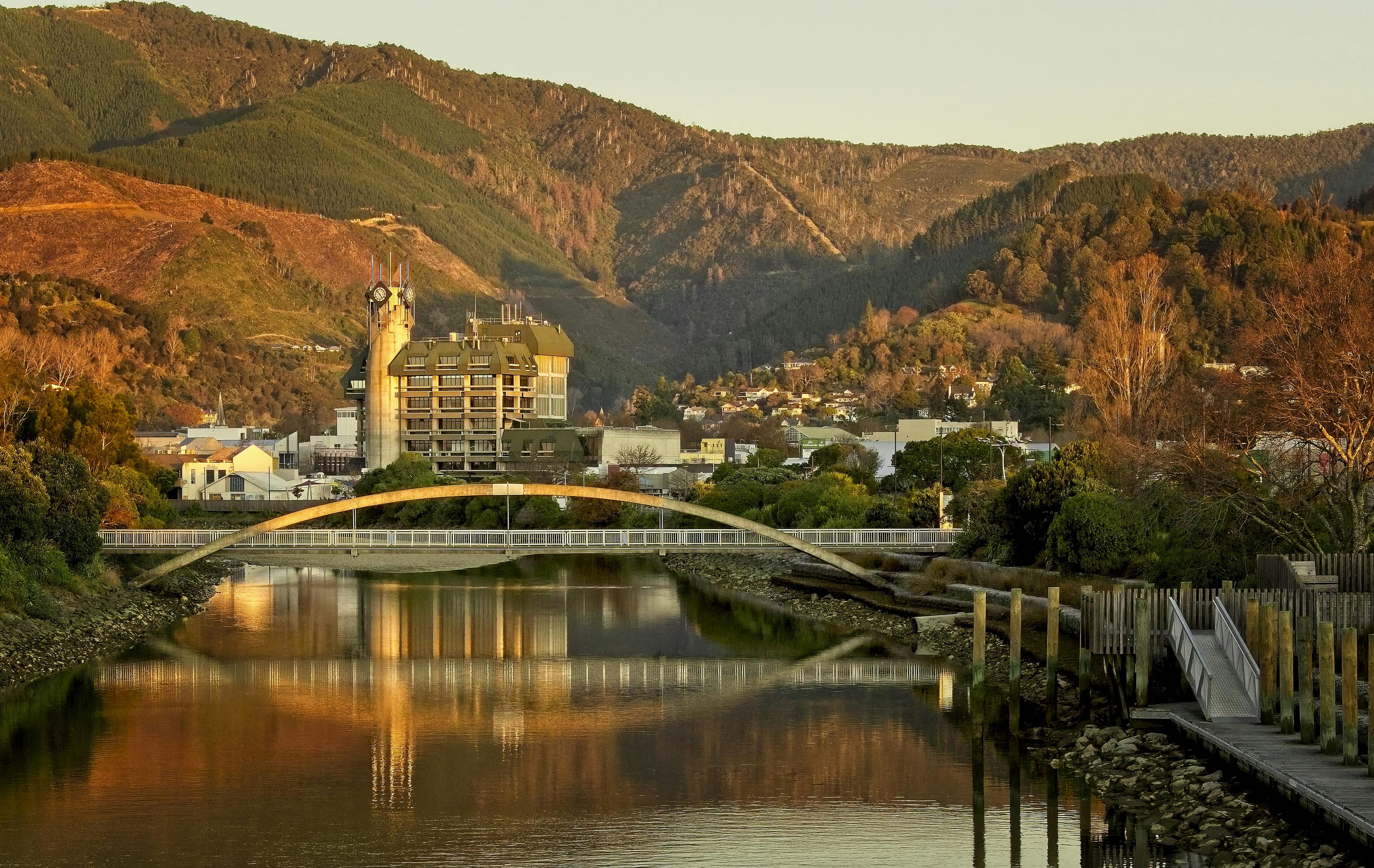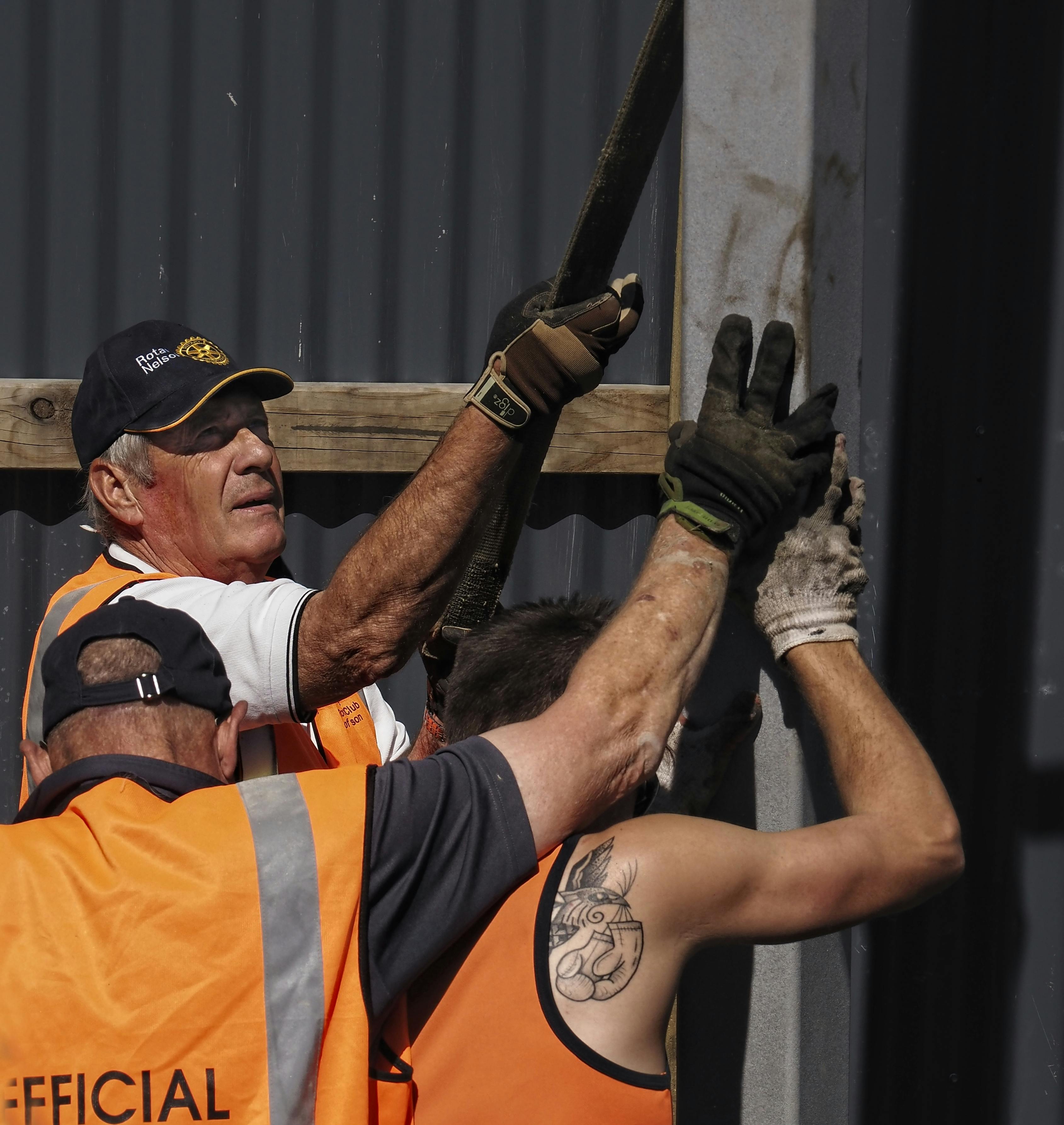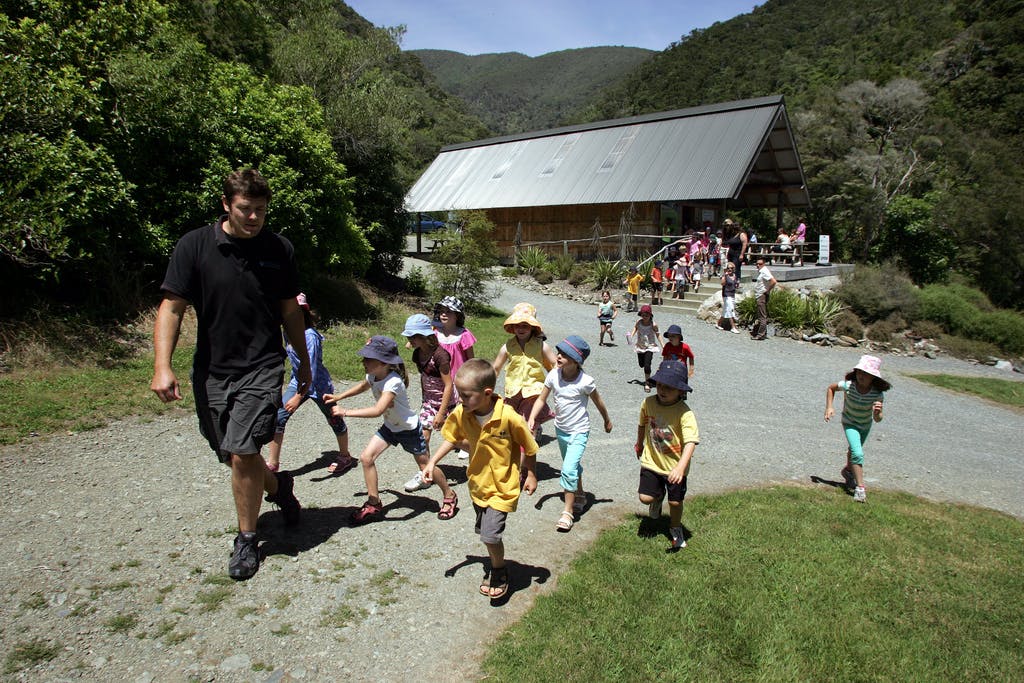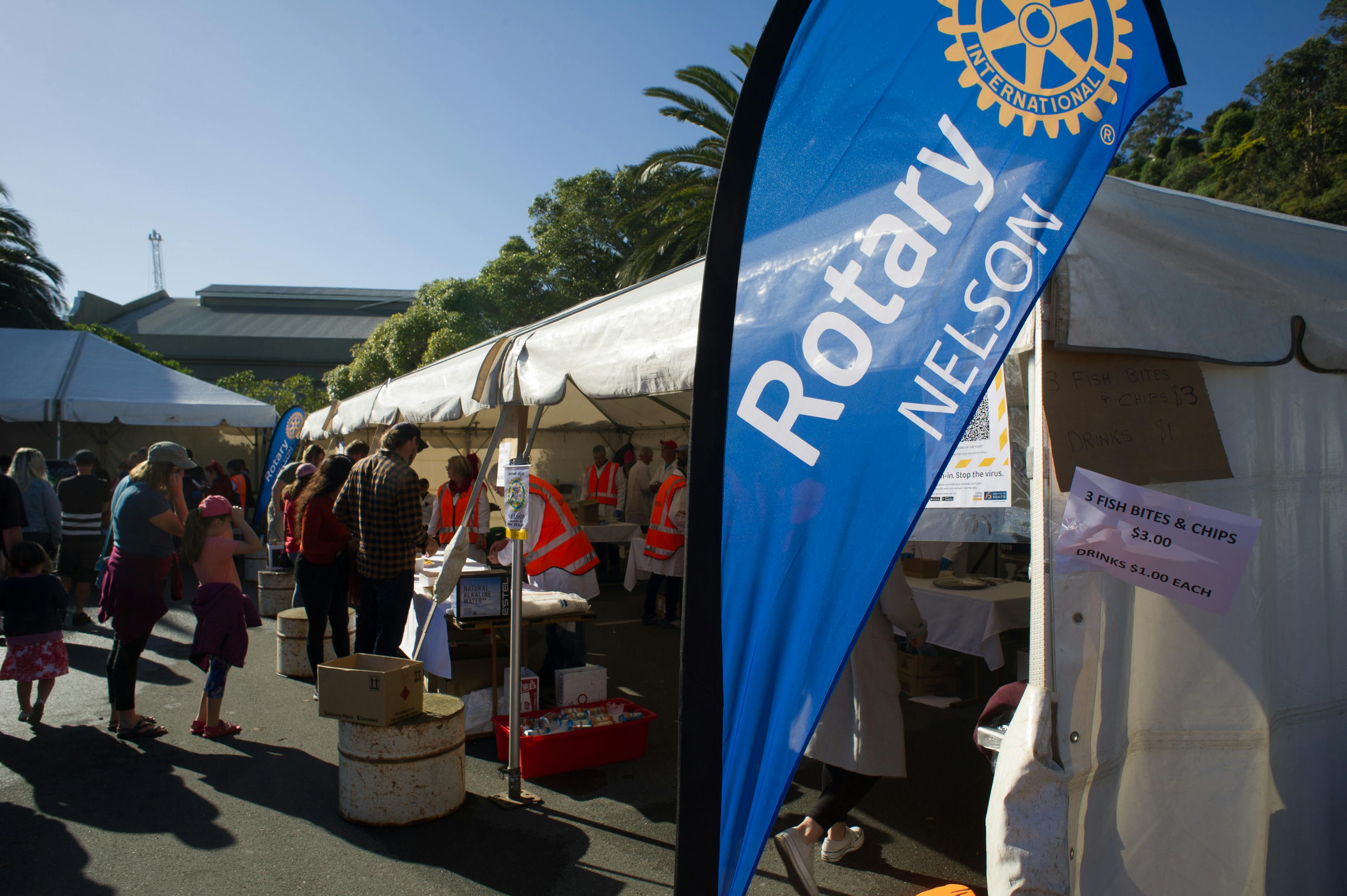Enhancing Nelson and the Region
Last updated 7 December 2022
Nelson City is fortunate to have dozens of parks and reserves for relaxing, picnicking and recreation with many of these quite hidden away in residential areas. These complement the extensive trails in the reserve areas in the hills surrounding the city for both walking and mountain biking, and a well-developed cycle way that links the Maitai valley, Wakapuaka and City Centre to the Great Taste Trail. With its sunny temperate climate, it’s a place for the outdoors.
Nature is always on our doorstep as evidenced by the Brook Waimarama Native Bird Sanctuary set in 714 hectares of native forest in the Brook valley, Waterworks Reserve only 5 minutes’ drive from the City Centre.(see separate story).
Nelson is a city of trees. To further enhance the city, trees have been planted along all the key streets and every summer there are irrigated hanging baskets to brighten the streets of the CBD with flowers
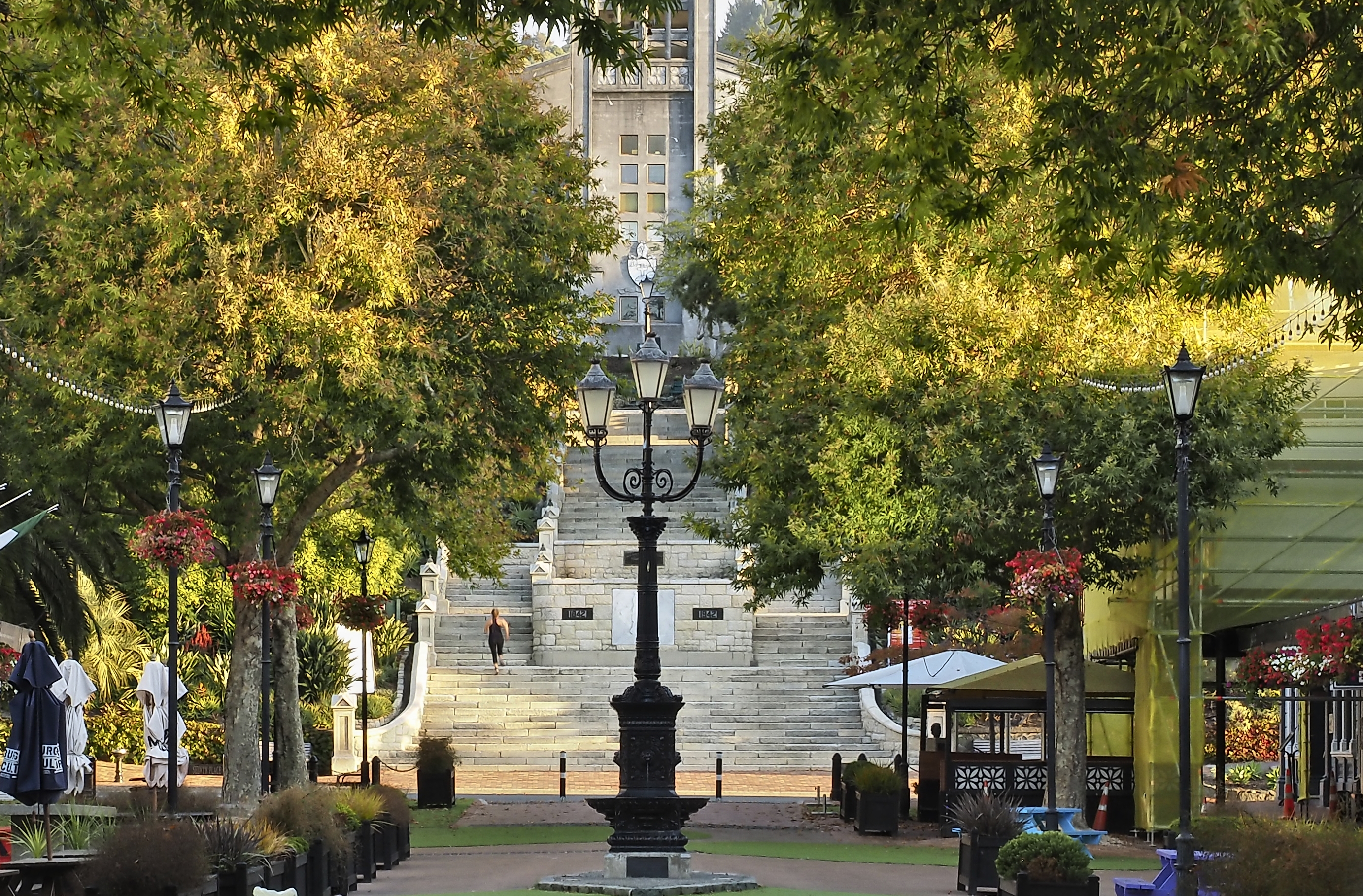
Irrigated hanging baskets on display in the heart of Nelson
In addition, Nelson has some wonderful public gardens including:
Queen's Gardens
A classic Victorian ornamental park, on the edge of the Nelson CBD area and forms part of an historic place precinct including the The Suter Art Gallery Te Aratoi o Whakatu which together with its sculpture walk provides a superb backdrop on the Western side of the site.
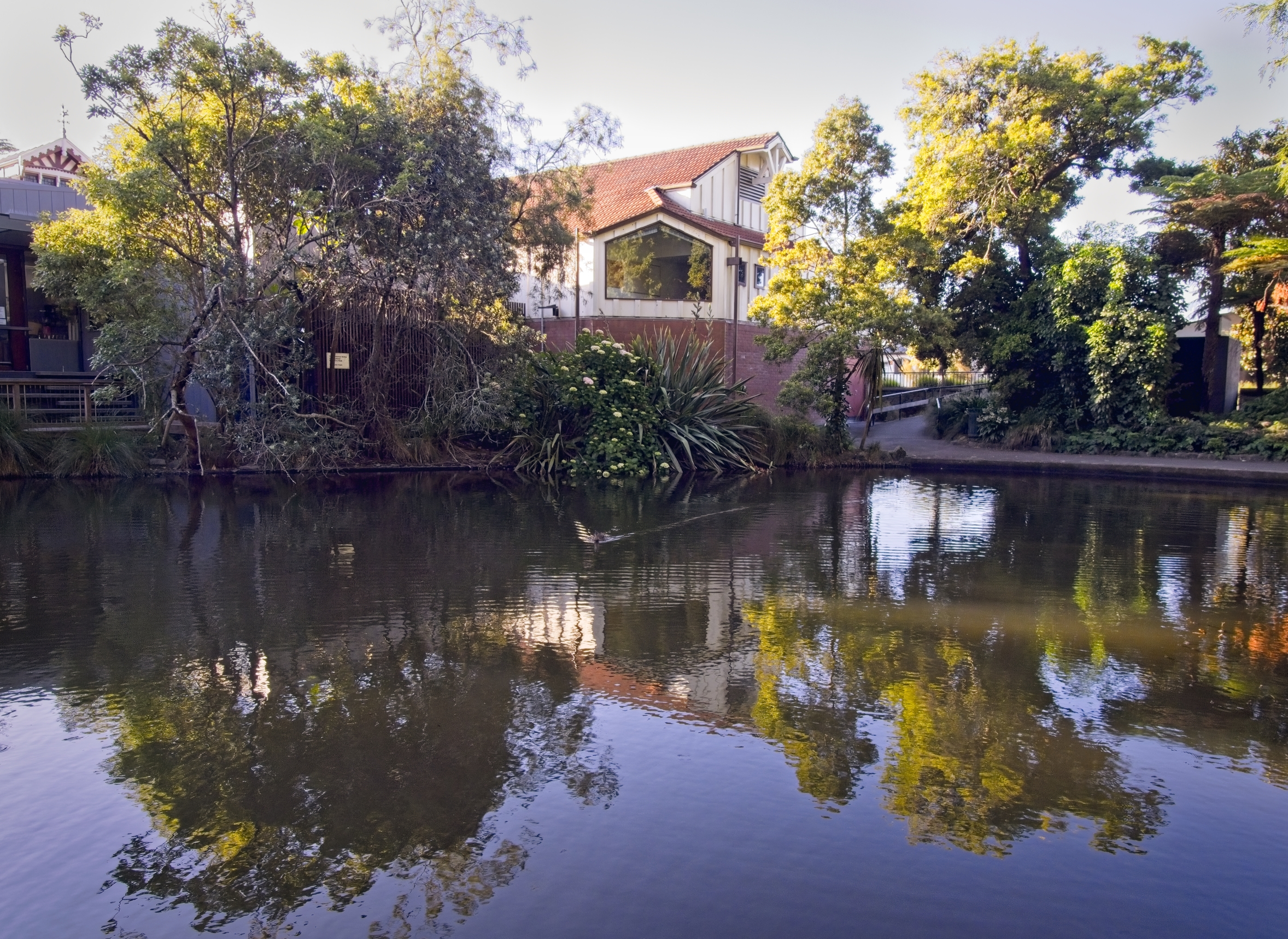
The Suter Art Gallery as a backdrop to The Queen's Gardens
These intimate gardens include a diverse range of plants and trees set around waterways and the Eel Pond which historically was a food gathering place for Maori. It’s a restful place for people to sit and enjoy the park surroundings or to walk around the paths beside the gardens, water features and sculptures that are in the park.
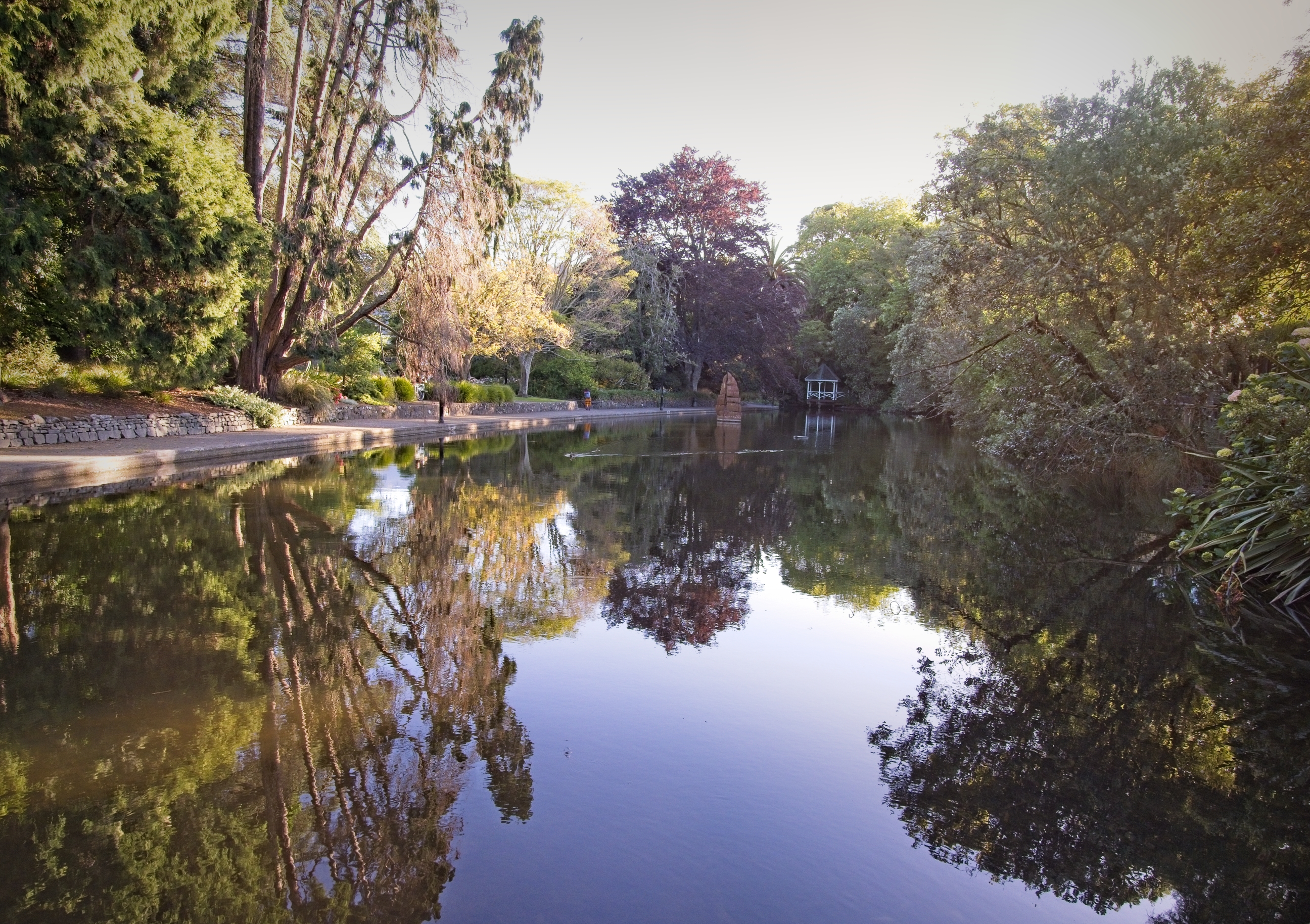
Eel pond behind Suter art gallery
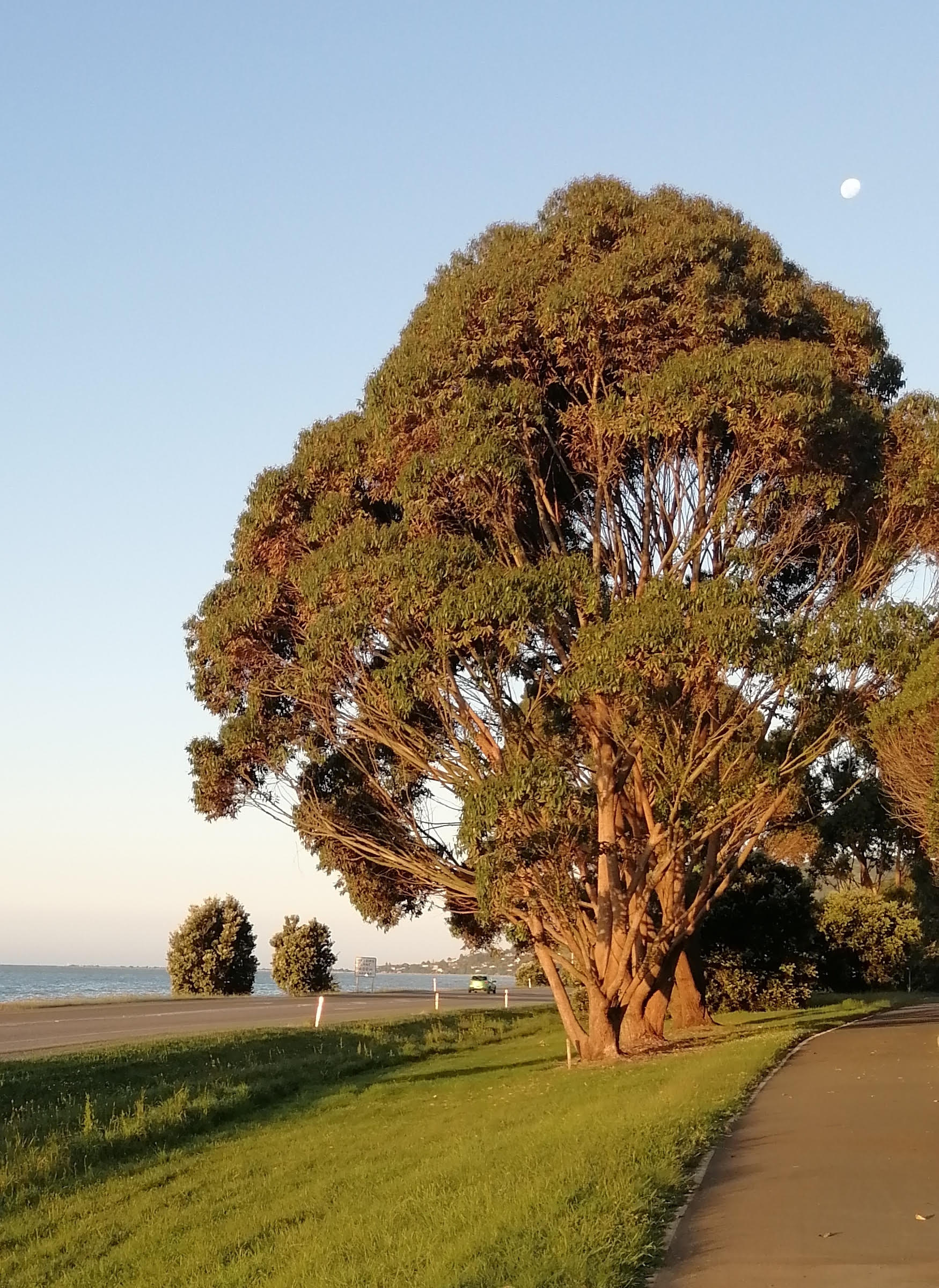
Trees along the way causeway leading into Nelson
Isel Park and Gardens
A heritage woodland of mixed conifers planted in 1845-65 and extensive gardens featuring colourful displays of spring bulbs and golden hues as the leaves of deciduous trees change colour over autumn. There are also large expanses of lawn with gardens and woodlands that provide a wonderful setting for Isel House, the home of an early immigrant, Thomas Marsden.

Isel House and Garden
Miyazu gardens
Was a sister city development with the city of Miyazu in Japan and is a Japanese themed garden with ponds, rock gardens, cherry and other ornamental trees which also provides a tranquil place to sit, walk and enjoy.
The city has also been left 3 other notable historic houses with lovely gardens including gardens:
- Broadgreen house in Stoke with its beautiful rose gardens.
- Fairfield house with garden and function areas. Fairfield is set between two of the entry tracks to the Grampian hill walkways.
- Melrose House and gardens are also in proximity to the Grampians and Fairfield house with an intimate café where walkers can take a break after a walk over the Grampian trails.
The Rotary Club of Nelson became an integral part of Nelson City’s landscaping story, with projects starting after the club’s establishment in1927 and continuing in earnest to the early 2000’s, though more recently that focus has spread out beyond Nelson into the Tasman region.
Members have planted over 11,000+ trees over time in cooperation with Nelson City Council. The focus has always been to identify gaps and opportunities to add to the work of the Council.
Projects have included.
- Plantings around Rocks Road and later, on Haulashore Island to enhance the historic waterfront drive from Wakefield Quay around to Tahunanui Beach.
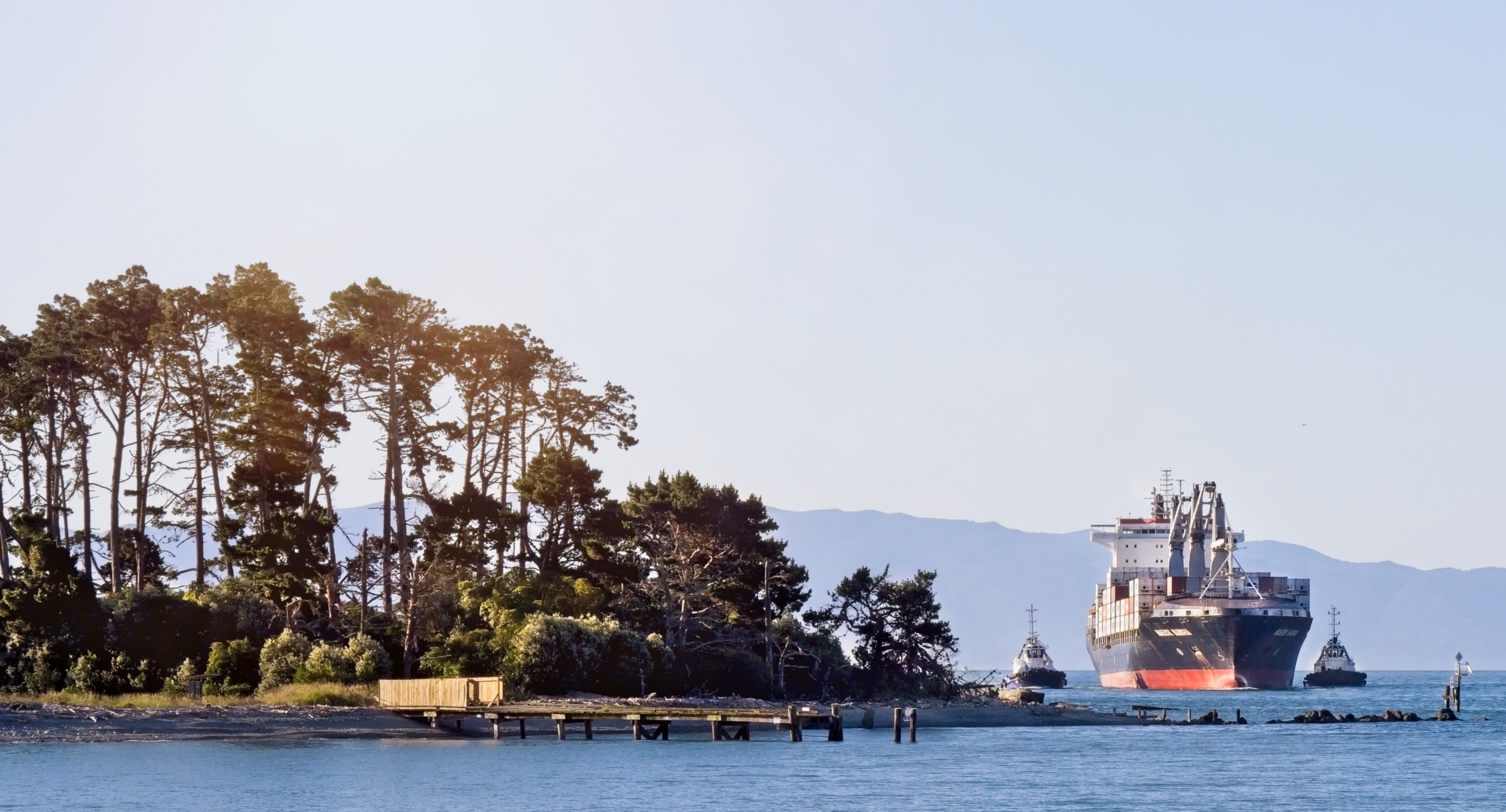
Haulashore Island and The Cut with Container Ship coming into Port
- Plantings in Milton Street , Waimea road and later the screening Cattle Market Reserve in the residential area East of Waimea Road. Both Milton Street and Waimea Road act as secondary access roads to the city centre so the objective was to upgrade the look and feel. .
- There were 1,000+trees planted along the Wakapuaka Road, which was the main Nelson/Marlborough highway entry to Nelson, on the hills above the highway ,as an avenue of trees from the entry to the historic Wakapuaka cemetery up to the crematorium and after the causeway was built, to replace the earlier highway, a further 100 Pohutukawa trees along the new road.
- There were plantings of trees around parks including Neal Park and Newman Grove, in the Queen Elizabeth II Reserve, at the rear of Founders Park. and located between the cycleway, along the causeway around the haven, and the train line of Founders. This was to honour Sir Jack Newman both as the founder of Founder’s Park but also as a Charter Member of Rotary and a significant contributor to Nelson.

Newman Grove Queen Elizabeth II Reserve at rear of Founder's Park.
- A lot of land in Nelson is reclaimed and, at various times, trees were planted along the reclamation canal and flowering cherries adjacent to the croquet Lawns also on the reclamation.
- With growing numbers of visitors coming in through the airport, there were trees planted around the terminal access roads and along roads into town including Muritai Street in Tahunanui which is commonly used as a link road onto Tahunanui Drive and Rocks Road to access the city.
- Over many years, the club planted considerable numbers of trees up the Maitai valley including at Waahi Taakaro (now a public golf course) and Hanby Park. Later the club, through a succession of projects, added play equipment at the Maitai reserve and constructed changing rooms and toilets at Waahi Taakaro.
- The Brook Valley became another area of focus after the Council built a concrete channel and culverts to control the Brook Stream in the residential area which had been subject to major flood damage in storms in the early1970’s.This included an initial planting of 800 native trees in 1975 to soften the outline of the culvert works, and then a further 800 in 1995 to add further screening.
- Prior to the 1970’s, most of the trees planted were deciduous, however there was then a change in emphasis towards planting mainly native trees.
Rotary also took an involvement in several of the parks and reserves including:
- Queens Gardens
- Installing a floodlit fountain and a drinking fountain in1999.
- Then on the centenary of the founding of Rotary, in 2005, the club funded the building and then installed the Water Wheel as a sculptured water feature on the stream by the Eel Pond. The wheel design was a symbolic reference to the Rotary Logo and it was constructed from 50,000 year old swamp Kauri recovered near Dargaville, in Northland.
- Church Hill (Picki Mai)
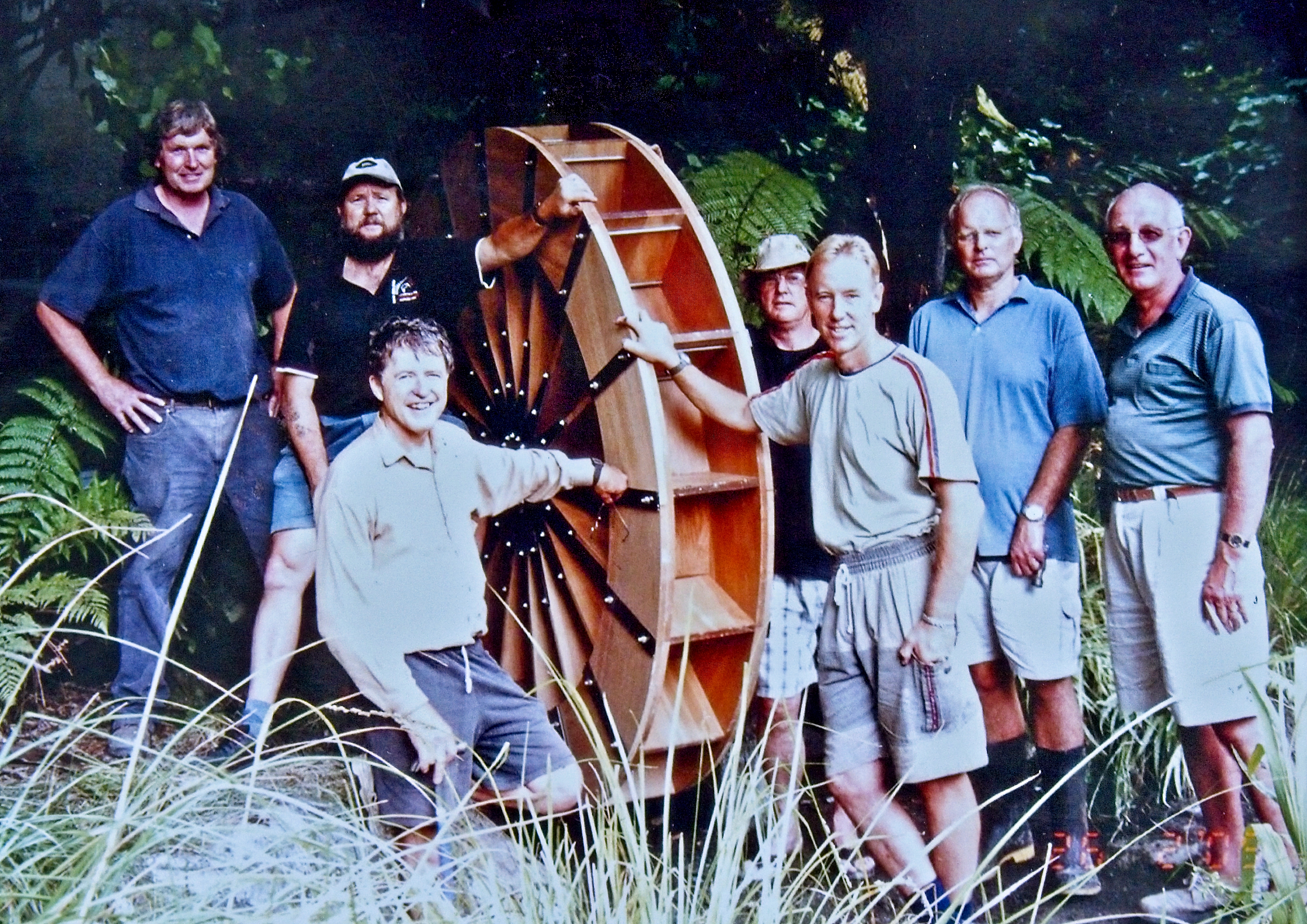
Rotary helping install the water wheel at Queen's Gardens
Christchurch Cathedral (Nelson) played an important part in Nelson becoming a city in 1858 when Queen Victoria made Nelson the seat of an Anglican Bishop despite a population at the time of only 5,000 citizens. The Cathedral has remained a prominent landmark sited on church hill with its bell tower at the North end of the hill overlooking Trafalgar Street, the main street of the city. The walking access from the city centre is up the Cawthron Steps ,a wide set of steps built out of Takaka Marble replacing an earlier wooden structure in 1911.The steps have been a gathering place for events since early colonial days.
Though used for a short time prior to being transferred to the Church of England as the site of a fort by the settlers, it had, prior to European settlement, also been recognized by Maori as a strategic site with a fortified pa located there.
From 1981 -1983 the Rotary club developed a scented walk on the eastern side of church hill.
Fairfield Park

Welcome to Fairfield Park
This park was originally designated as the Trafalgar Street Cemetery but ceased being used as a cemetery in the late 1800’s.There are still a small number of gravestones in evidence in the tree line on the Trafalgar Street border.
Council later renamed it as Fairfield Park linking it to Fairfield House which is directly across Van Diemen Street on the south end of the park.
The Park is also opposite Melrose house which is on the east side of Trafalgar Street.
It was at Fairfield Park that the Rotary Club of Nelson planted the Camelia Garden in memory of Lady Newman, wife of Charter Member Sir Jack Newman, who also made a considerable contribution to the community. This project included the building of a small rotunda which provides a great setting for weddings.
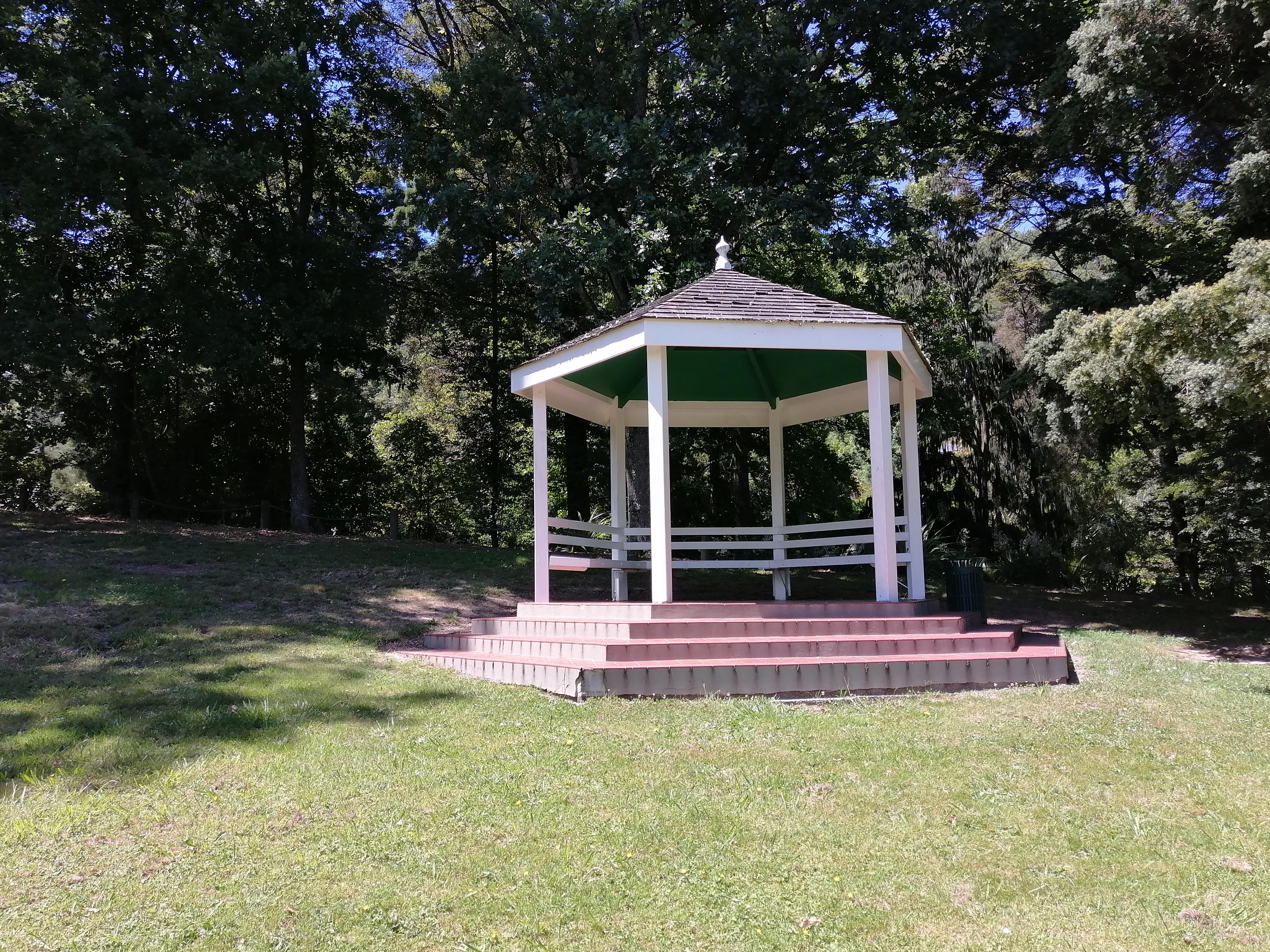
The Fairfield Park Rotunda
The park is also used for outdoor summer festival events including as a venue for concerts, outdoor movies and other entertainment.
- Tahuna Reserve
A significant number of projects have focused on Tahuna beach and the reserve area.
These included;
- Planting of trees in the reserve and the building of a protective fence along the dunes on the beach.
- Upgrading the modeller’s pond and then later the planting of 700 shrubs around the perimeter of the site.
- Helping to turn around the financial performance of Natureland with 2 Rotarians joining the board, provision of funding grants and the construction of new toilets. Nelson West Rotary Club also became involved in building a storage area with a chiller for the food for the animals and birds.
Since the year 1999, Nelson Rotary has continued with planting of trees though this has largely been in the Tasman Region including :
- Lake Rotoiti – as part of the "Rotoiti Nature Recovery" project to help regenerate areas of native trees. The intention of the overall project was to reduce predators in the area using intensive trapping to assist with recovery of existing species and to allow reintroduction of native species e.g. the Great Spotted Kiwi.
- Waimea Estuary – planting of native shrubs and trees, in conjunction with the Tasman Environment Trust, along the seashore of the Waimea Estuary ,Rough Island, Best Island and Rabbit Island, to stop erosion of the shorelines from wave action.
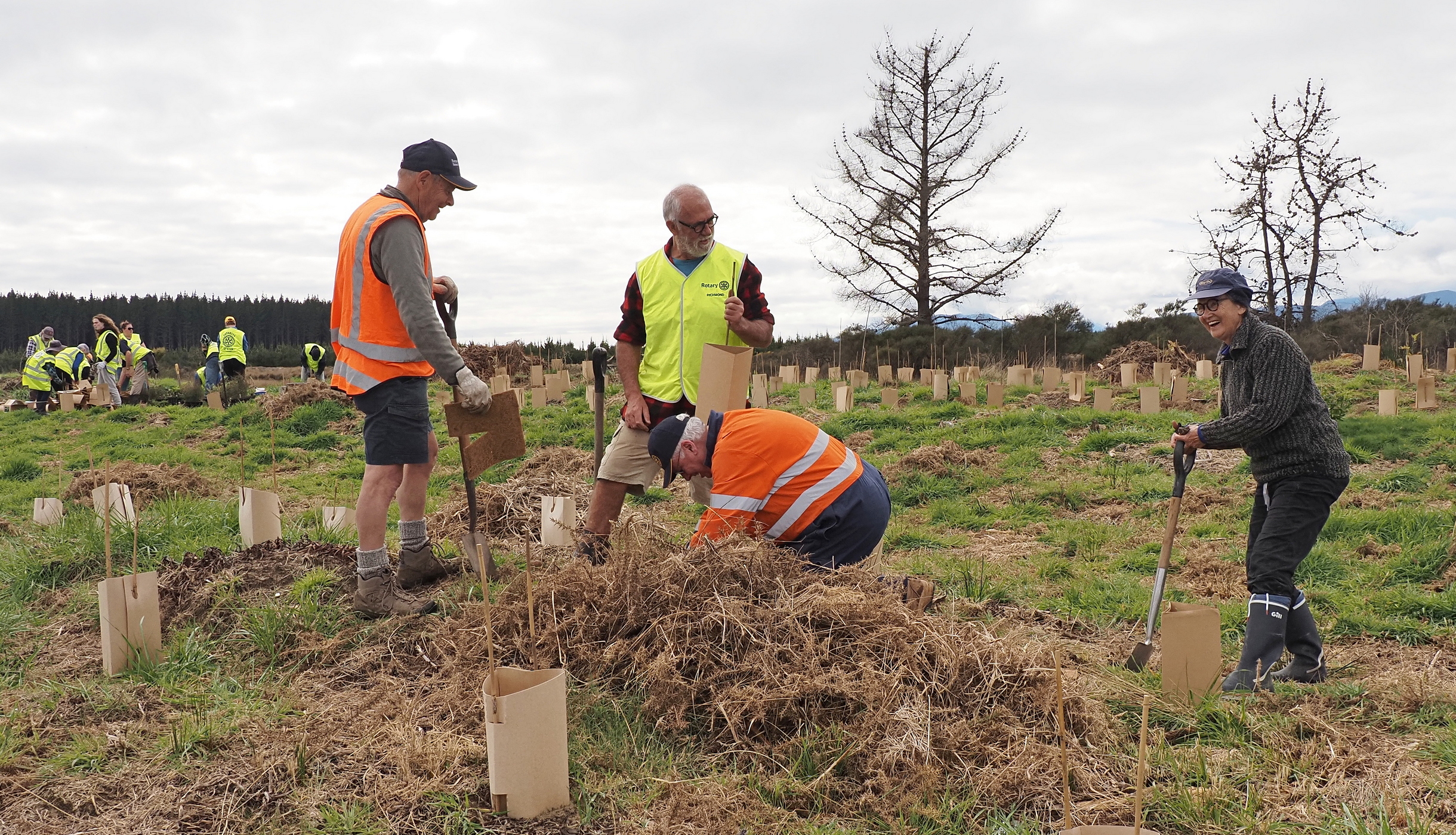
Tree planting at Rabbit Island
Protecting and enhancing our environment is becoming an increasingly important focus for Rotary, not just in New Zealand but Worldwide as we come to grips with the effects of climate change and sea level rise.
